Environmental Report 2021
Measures against Climate Change
The fight against climate change is a crucial global issue that requires the further involvement of each and every person and organization. The JAE Group in Japan is working to address climate change through environmental awareness training, production-related measures, and measures at plant facilities.
Amount of Carbon dioxide Emitted by the JAE Group in Japan
Total CO2 emissions by the JAE Group in fiscal 2020 were 106,117 tons, up from the previous fiscal year, and the CO2 emissions per sales primary unit also increased. The primary cause was the impact of the production amount due to the market’s recovery trend.Senior management is directly engaged with the following initiatives, working to achieve the goal of net-zero CO2 emissions for the Group by 2050, in accordance with the government’s policy. We will consider measures tailored to the conditions at each site.
・Reductions to CO2 emissions
・Private power generation
・Procurement of renewable energy
・Procurement of renewable energy certificates
We will continue to identify electricity used and monitor CO2 emissions and the sales primary unit while setting up additional infrastructure, conserving energy at manufacturing facilities and manufacturing efficiently.
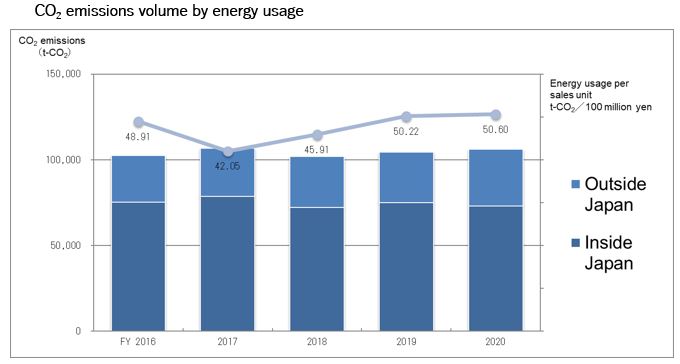
※Energy usage per sales unit is shown as unit of CO2 emissions in Japan and overseas, and consolidated net sales (unit: t-CO2/100 million yen)
※The equivalency factor for CO2 emissions due to energy use is the value published by the Federation of Electric Power Companies. In fiscal 2020, the fiscal 2019 result (0.444 ton-CO2/MWh) is being used.
Status of response to SBT
The JAE Group has received SBT 1.5℃ certification from SBTi as part of the NEC Group. The Akishima Plant has received third-party verification of its GHG emissions (scopes 1 and 2) data (fiscal 2020).We will continue to ensure the accuracy of our calculations and improve the efficiency of our calculation methods.
Status of progress toward uniform goals in the electrical and electronics industries
The JAE Group in Japan participates in the electrical and electronics industries’ Action Plan for Achieving a Low Carbon Society and is progressing toward the goal of a 1% annual average energy efficiency improvement in production processes through 2030.Although total energy usage is increasing in line with higher production volumes, we have curbed energy usage per unit by taking steps to contribute to the fight against climate change.
In fiscal 2020, the improvement rate was 22.90% on a per-unit of energy basis, surpassing the goal of 7.73%.
Status of response to Tokyo Cap-and-Trade Program
JAE’s Akishima Plant is required to reduce total GHG emissions. The Group supports the Tokyo Metropolitan Government’s efforts to achieve Zero Emission Tokyo, a program which aims to bring CO2 emissions to zero. The Group donated 12,314 tons in credits (excess CO2 reductions), based on the Tokyo Cap & Trade Program, and received a note of appreciation.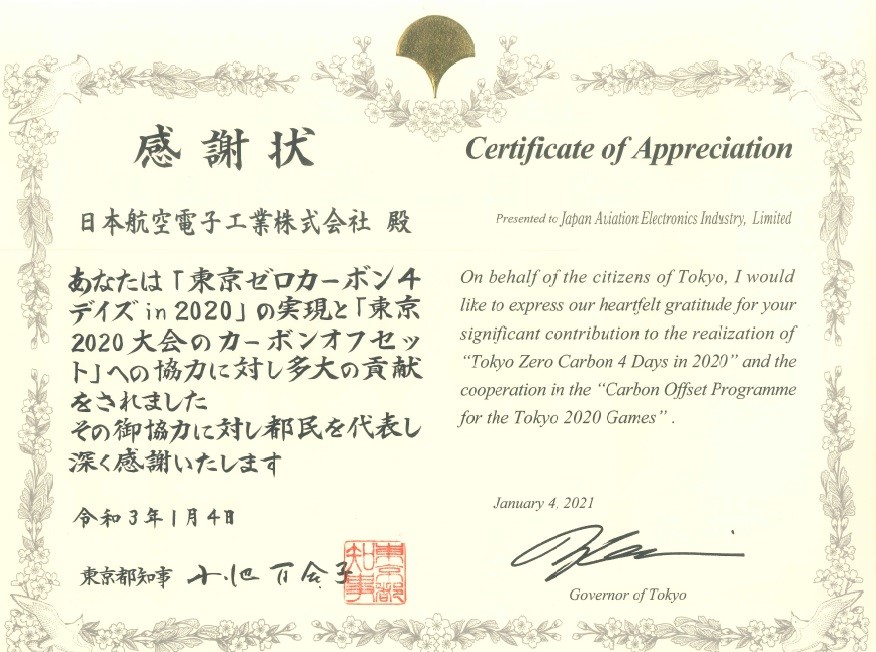
During the second compliance period from fiscal 2020 to fiscal 2024, companies must reduce CO2 emissions by an average of 25%, but due to the launch of new products, we did not meet the 25% reduction target from standard emissions in fiscal 2020 for a single fiscal year. At this rate, achieving the required reductions will be difficult, and so we will go even further in pursuing measures to address climate change, including introducing renewable energy.
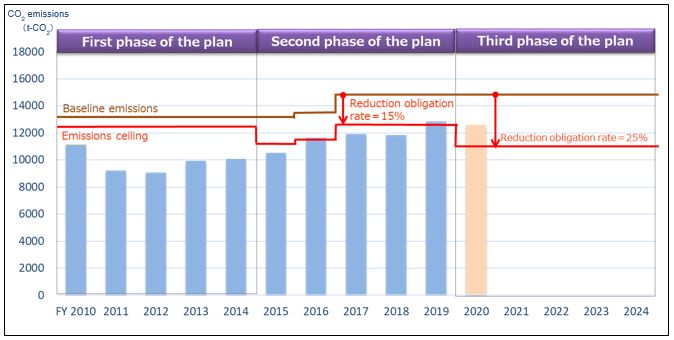
Fiscal 2020 Energy Conservation Case Studies
Plants and related facilities
| Implementation details (1) | ||
| Reduction of loss by replacing substation transformer (JAE) | ・Replaced substation transformers at Factory No.3 with high-efficiency transformers, consolidated transformers when this update was made (from 4 units to 3 units) and adjusted capacity. ・Replaced No.2 extra-high-voltage substations (4000kVA) with a super-efficient transformer. |
|
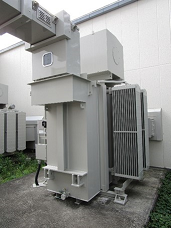 |
Effect | Note |
| 14,454 kWh/year (Factory No.3) 25,715 kWh/year (extra-high-voltage substations) |
Substation transformers are systematically replaced every 30-35 years. We have been replacing older units with high-efficiency equipment since fiscal 2012 (13 units were upgraded by fiscal 2019). We plan to upgrade 13 substations at the No. 1 plant and upgrade two gym substations with high-efficiency transformers by fiscal 2025. |
|
| Implementation details (2) | ||
| Conserving energy by upgrading compressors (JAE) | No.4 compressor (run 24 hours a day, 365 days a year, with the exception of maintenance periods, since it is base equipment) was updated and the settings for controls on the number of units were adjusted, enabling substantial energy conservation. | |
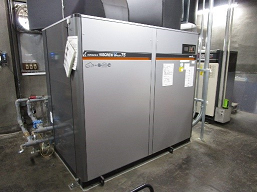 |
Effect | Notes |
| 96,000kWh/year |
The Akishima Plant has five compressors and the number of units is adjusted to match the optimum combination. Compressors are systematically updated every 10-20 years. One had been updated by fiscal 2019. The remaining three will be updated by fiscal 2025. |
|
| Implementation details (3) | ||
| Installation of inverter equipment for air conditioning equipment (HAE) | The temperature in Building D tends to increase due to the effect of running press machines, and air conditioning equipment is used at full capacity to cool the building. Inverter equipment made by the company itself was added to the control panel of the air conditioning equipment to reduce electricity use by running it with frequency controls. | |
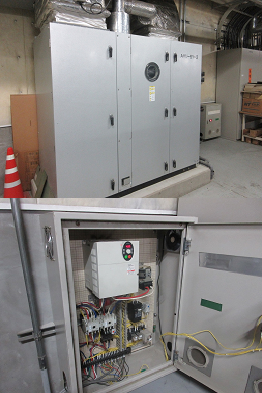 |
Effect | Notes |
| 20,400kWh/year |
― | |
Lighting
| Implementation details (1) | ||
| Switched to LED lighting (JAE) | ・Replaced 404 ceiling lights on the third floor of Factory No. 1. ・Replaced 28 ceiling lights in the hallways of Factory No. 1. ・Replaced 29 ceiling lights in common areas of the office building hallways and 48 ceiling lights in the bathrooms. ・Replaced 51 ceiling lights in the bathrooms of the welfare building with LED lights with movement sensors (to eliminate the need for people to turn off the lights) |
|
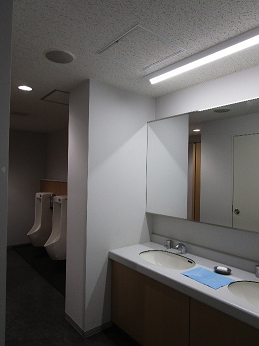 |
Effect | Notes |
| 34,947kWh/year |
Lights in buildings have been systematically changed to LED lighting since fiscal 2013. We plan to systematically update lighting in the office building and No. 1 factory floors that have become outdated. |
|
| Implementation details (2) | ||
| Switched to LED lighting (JAE/NLC) | Six lights in the No. 1 center’s cafeteria and kitchens were updated. | |
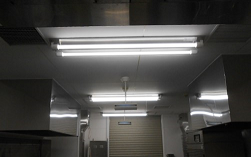 |
Effect | Notes |
| 56kWh/year | 2 lights x 3 rows were updated | |
Activities of overseas production bases
| Implementation details (1) | ||
Energy conservation activities (JAE-WX)
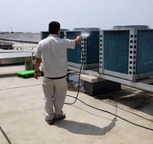 Cleaning of air conditioners 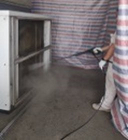 Compressor maintenance  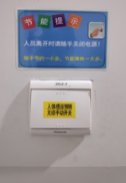 Adjustments to lighting sensors |
Improved savings on electricity ・The radiator and filter for the air conditioning are regularly cleaned and efforts made to improve efficiency. When abnormal values in the use of electricity are discovered in daily inspections, the relevant department is contacted in a timely manner. ・Compressors are maintained and the number of units operated rationally. The condition of air leak equipment is communicated to the relevant division in a timely manner and improvements made. ・Lighting sensors for shared areas are adjusted and can be turned off if no one is there. |
|
| Effect | Notes | |
|
Not calculated
|
ー | |
Logistics related
1) CO2 reductions from modal shift (railway transport)
Reduced CO2 by transporting electrical couplers with container transport using railways
CO2 was reduced by 1.436 tons (compared to truck transport).
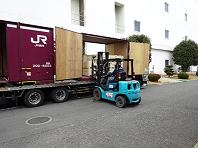
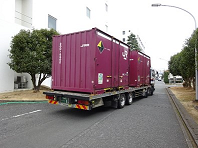
2) CO2 reductions due to larger size of Tokai trucks
We changed from using two 4-ton Tokai trucks a day to one 10-ton truck, which resulted in a 0.615 ton reduction in CO2.
*0.015 tons/day in CO2 reductions x 41 days = 0.615 tons
3) CO2 reductions by using reusable trays
CO2 was reduced by reusing trays for connectors.
CO2 reductions = 125.893 tons
*49.370 tons of reusable trays/year x conversion factor of 2.55 CO2/tons = 125.893 tons
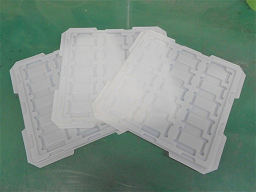
Activities to increase awareness of measures to fight climate change
Introduced here are several fiscal 2020 efforts made to increase awareness of climate change measures.Environment Month publicity and a wide range of Environment Month activities were held at each site.
- No Driving Day
- Eco-driving training
- Clean up campaign around each work site, and other activities
All employees of the JAE Group in Japan took part in e-learning.
(For details, see the Environmental Education section) (click to open)
● Warm Biz and Cool Biz
- Cool Biz (May 7 through October 31)
- Warm Biz (November 1 through March 31)
On summer solstice and “Tanabata” nights, for the two hours from 8 to 10 pm, called “Lights Down” time, as many lights as possible are switched off at each work site and workers do the same in their homes.
July 7: “Tanabata Lights Down” (Cool Earth Day)
Measures to fight climate change through supply chain cooperation
The JAE Group asks its domestic suppliers to agree to and implement greenhouse gas emission reductions in line with its CSR guidelines, and it aggregates the annual energy purchases of each company.The amount of energy purchases compared to fiscal 2019 by the business partners that responded decreased slightly, as in the previous year.
Building a sustainable world
Significance of the 2021 Environmental Report
Symbol of the Group's Environmental Policies
Scope of Reporting and Editorial Policy
Policies and results of environmental activities
Environmental Management
- Implementation Status of the Environmental Management System
- Environmental Audits
- Environmental Education
- Environmental Risk Management
- Environmental Accounting
Engaging with Society
- Involvement with Biodiversity
- Supply Chain Management
- Eco-friendly Products
- Social Contribution Activities
- Environmental Activity History
Initiatives to reduce environmental impact